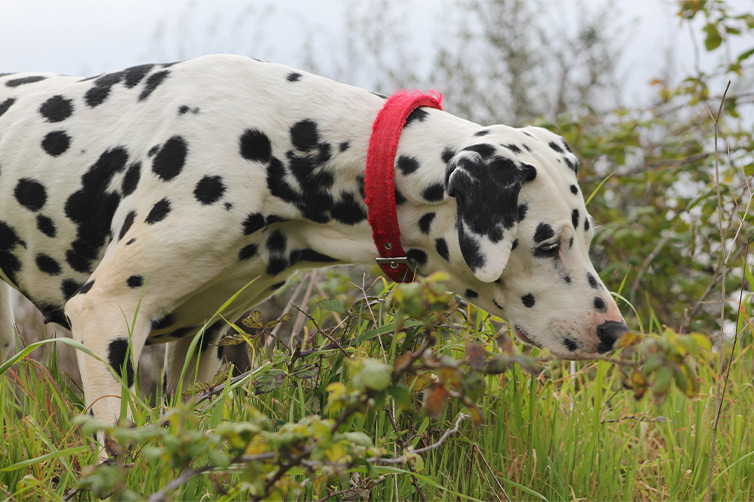Ticks on Dogs and the Changing Environment
Climate change is cause for concern not just because of rising coastlines and extreme weather conditions. It can also lead to a rise in the occurrence of ticks on dogs and other animals. These tiny pests can cause many serious diseases and pose a threat to our pets’ – and our own – health. Read on to learn more.
TICKS ON DOGS

Posted by bravectosouthafrica – 23 June 2020
Tick and Flea-Related Issues Are Heating up
“I think one of the biggest concerns that you see within the published literature for ticks is that ticks’ geographical regions are expanding.”
– Dr Janet Foley, professor and researcher at the University of California’s School of Veterinary Medicine
Global ecological changes have far-reaching consequences, including changes in the emergence patterns of various tick and flea-borne diseases. Zoonotic pathogens mostly originate in wildlife and are moving targets. According to Joan Capuzzi, VMD’s research, numerous factors have led to shifts in associated disease patterns, including:
- An increase in human-wildlife contact
- Broad ecological changes
- The globalisation of human trade and travel
- Vector/pathogen evolution
Tick and flea season may become a year-round issue sooner than you think. With the climate growing ever warmer, it’s not unusual for there to be record hot days even in the traditionally colder, winter months. This means that external parasites such as ticks and fleas are starting to enjoy a far more hospitable world.
Our cats, dogs and other small animals are now likelier than ever to fall victim to a tick or flea infestation, which in turn can lead to disease, if the necessary precautions aren’t taken (more on that later). Humans are at risk too, since some of these tiny beasties can spread diseases to us as well.
Associate research scientist at Fordham University’s Louis Calder Centre Biological Field Station, Thomas J. Daniels, PhD., has revealed that ticks seem to be affected by climate changes more than fleas. This is thought to be because fleas live on their host – i.e. your cat or dog. So despite the changes occurring in the world around your pet, your pet’s environment remains largely the same to fleas. Daniels goes on to say that the changes fleas experience because of climate change will be more indirect, as well as unpredictable.
Now, let’s take a closer look at some of the most common tick-borne diseases to affect South African dogs.

An Increase in Ticks on Dogs = an Increase in Serious Diseases
With ticks becoming an increasing problem for longer periods throughout the year, they have more opportunity to spread, oftentimes dangerous, diseases. Worryingly enough, research done by the University of the Free State has found that ticks are growing steadily more resistant to various pesticides.
A single tick bite can transmit numerous diseases. Ticks, in turn, pick up these pathogens from infected wildlife and pests like rats. A tick that latches onto one of these creatures is much more likely to become co-infected.

It’s important to familiarise yourself with the signs and symptoms of South Africa’s most commonly diagnosed tick diseases in dogs. If you suspect that your dog might have contracted any of these diseases, be sure to visit your vet ASAP:
#1 Anaplasmosis
Brown dog ticks are the culprits when it comes to spreading this disease. The infection is caused by the Anaplasma phagocytophilum or Anaplasma platys bacteria. Severe, confirmed cases are treated with antibiotics.
Anaplasmosis symptoms in dogs can include:
- Anaemia
- Diarrhoea
- High fever
- Loss of appetite
- Neck pain
- Neurological signs
- Seizures
- Vomiting
#2 Babesiosis
The intracellular parasite, Babesia, is the cause of this tick-transmitted disease. It has an incubation period of around two weeks from initial exposure to showing signs of the first symptoms.
Babesiosis symptoms can range from mild to severe and may include:
- Discoloured stool
- Enlarged lymph nodes
- Enlarged spleen
- Fever
- Jaundice
- Lack of energy
- Loss of appetite
- Orange to red-coloured urine
- Pale gums and tongue
- Weakness
- Weight loss
Cases of severe infection can impact various organ systems, including the gastrointestinal (GI) tract, kidneys, lungs and nervous system.
#3 Ehrlichiosis
This tick-borne infection is known to be caused by the brown dog tick, which transmits Ehrlichia canis. If gone unidentified and untreated, it can cause serious damage to your beloved pooch’s body.
Canine ehrlichiosis symptoms include:
- Lameness – occasional
- Lethargy
- Loss of appetite
- Low fever
- Nosebleeds – occasional
- Swollen lymph nodes
- Unexplained bruising – occasional

Keeping Ticks on Dogs at Bay No Matter What the Climate
With changing weather conditions across the globe and the tick’s hunting grounds ever-expanding, it is now more important than ever to provide your loyal pal with back-to-back tick and flea treatments.
If you’re looking for a fast-acting and long-lasting solution to your dog’s tick, flea and mite problems, consider Bravecto®. Treat your pup to either a tasty Bravecto® Chew or convenient dose of Bravecto® Spot-On for Dogs – a topical treatment. A single chew will keep your dog protected against ticks and fleas for up to 12 weeks. One dose of the topical treatment will protect your pooch for up to 4 months against ticks and up to 6 months against fleas. Bravecto® lasts 3x longer than monthly treatments.
By using Bravecto® you can spend less time worrying and more time having fun with your dog – whether that’s relaxing at home or having an outdoors adventure. Remember: prevention is always better than cure. Put a stop to the frequent occurrence of ticks on dogs now.

Subscribe to our Newsletter
Get to know your furry friend better! Sign up for all things dog- or cat-related.
The Hairy Facts about the dreaded hairball
12 April 2021
Help! My dog’s barking mad! Volume 2
12 April 2021
Your Itchy, Scratchy Cat – All About Cat Skin Problems
12 April 2021
The Dog’s Diet: A Bone of contention?
01 April 2021
Mango Fly Worms: How to Spot and Eliminate them
Posted on November 28,2019
Managing Mange And Mites In Your Dog
Posted on June 11,2018
Why Do Cats Purr and How? Learn What Your Cat Is Saying
Posted on October 14,2020
How to Get Rid of Ear Mites in Dogs
Posted on November 06,2019









